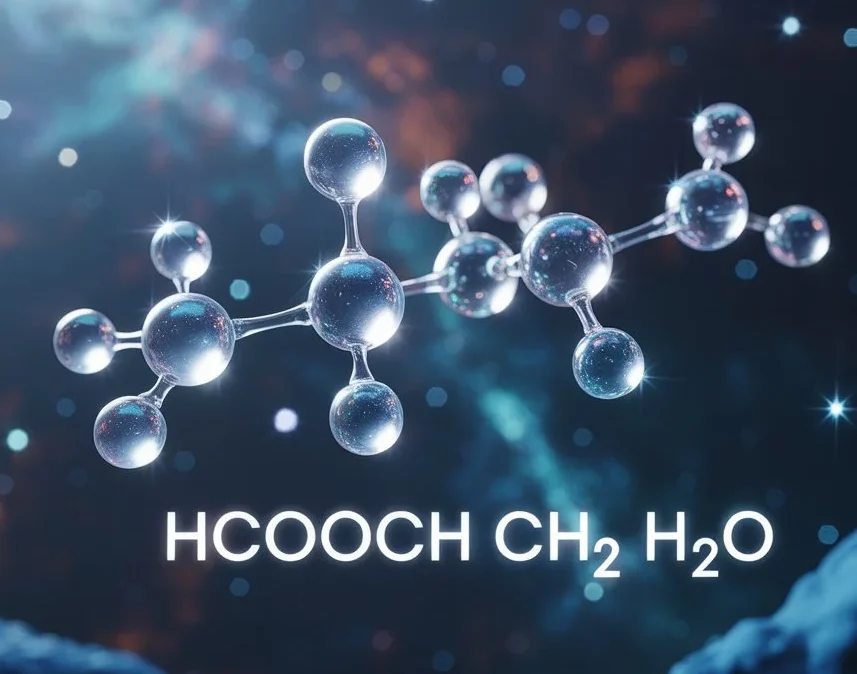Chemistry is like cooking, but with atoms and molecules. And just like in any recipe, ingredients matter. In this article, we’ll look at three major “ingredients” in organic chemistry: formic acid (HCOOH), methanol (CH₃OH), and water (H₂O). Together, they create a beautiful reaction with meaningful uses in labs and industries alike.
What Are Organic Compounds?
Organic compounds are primarily made up of carbon and hydrogen atoms. They often include other elements like oxygen, nitrogen, and sulfur. Compounds like HCOOH and CH₃OH are simple but essential building blocks in this vast world of molecules.
Importance of Water in Chemistry
Water is not just a drink. It’s a medium, a participant, and sometimes even a product of chemical reactions. In the case we’re studying, water is produced as a result of a fascinating organic reaction.
Chemical Overview of HCOOH (Formic Acid)
Structure and Molecular Formula
HCOOH stands for formic acid, the simplest carboxylic acid. Structurally, it contains one carbon atom, double-bonded to an oxygen atom and single-bonded to a hydroxyl group (-OH). The molecular formula is HCOOH or HCO₂H.
Physical and Chemical Properties
-
Colorless liquid
-
Pungent odor
-
Miscible with water
-
Weak acid, but stronger than acetic acid
Natural Occurrence and Uses
Formic acid naturally occurs in ant venom and stings from nettles. Industrially, it’s used in leather production, preservatives, and cleaning agents.
CH₃OH (Methanol) – The Simplest Alcohol
Structure and Characteristics
Methanol (CH₃OH) has a single carbon atom bonded to three hydrogen atoms and a hydroxyl group (-OH). It’s also known as wood alcohol because it was once made by distilling wood.
Production Methods
Modern methanol is synthesized from carbon monoxide and hydrogen in the presence of a catalyst.
Applications and Dangers
-
Used in antifreeze, fuels, and as a solvent
-
Highly toxic if ingested
-
Can cause blindness or death in large amounts
H₂O – The Universal Solvent
Molecular Properties of Water
Water is made of two hydrogen atoms and one oxygen atom. Its polarity makes it an excellent solvent for ionic and polar substances.
Role of Water in Chemical Reactions
It often acts as:
-
A solvent
-
A reactant
-
A product (like in esterification)
Why Water Is So Important in Organic Chemistry
Without water, life wouldn’t exist. It also helps chemists purify, dissolve, and react various compounds effectively.
Chemical Reactions Involving HCOOH, CH₃OH, and H₂O
Esterification Reaction: Forming Esters
When formic acid and methanol react, they form methyl formate (HCOOCH₃) and water (H₂O). This is a classic example of esterification.
Reaction Equation of HCOOH + CH₃OH ⇌ HCOOCH₃ + H₂O
This reversible reaction typically occurs in the presence of an acid catalyst like sulfuric acid.
Conditions for the Reaction
Catalyst Requirement
Sulfuric acid (H₂SO₄) is usually used to speed up the reaction and absorb water to push the reaction forward.
Temperature and pH Considerations
Moderate heating (around 60–70°C) and acidic pH are optimal.
Mechanism of Esterification Between Formic Acid and Methanol
Step-by-step Breakdown
-
Protonation of the carbonyl group of formic acid
-
Nucleophilic attack by methanol’s oxygen
-
Proton transfer steps
-
Elimination of water molecule
-
Formation of ester: methyl formate
Formation of the Ester Bond
The key moment is when the -OH group from the acid and the -H from the alcohol join to release H₂O and create the ester linkage.
Industrial Applications of This Reaction
Synthesis of Methyl Formate
Methyl formate is used:
-
As a solvent
-
In the production of formamide
-
As a blowing agent for foam insulation
Use in the Perfume and Solvent Industry
Esters like methyl formate have sweet, fruity smells—making them ideal for perfumes, flavorings, and aroma products.
Laboratory Demonstration and Safety Precautions
Small-scale Lab Procedure
-
Mix equimolar HCOOH and CH₃OH in a flask
-
Add a few drops of H₂SO₄
-
Heat gently for 30–60 minutes
-
Cool and extract the ester
Handling Methanol and Formic Acid Safely
-
Use gloves and goggles
-
Work in a fume hood
-
Store chemicals away from heat or flames
Environmental Impact of Methanol and Formic Acid
Biodegradability and Toxicity
Both compounds are biodegradable, but methanol is toxic to humans and animals. Proper usage and disposal are critical.
Safe Disposal Methods
Neutralize acids and alcohols before disposal. Always follow local environmental safety regulations.
Conclusion
When HCOOH and CH₃OH react, the result is not just water and an ester—it’s a small glimpse into how chemistry mimics life’s complexity. This simple yet elegant reaction is widely used across industries and labs. Whether you’re a student, a researcher, or just someone curious about molecules, this reaction is a perfect example of the beauty of organic chemistry.
